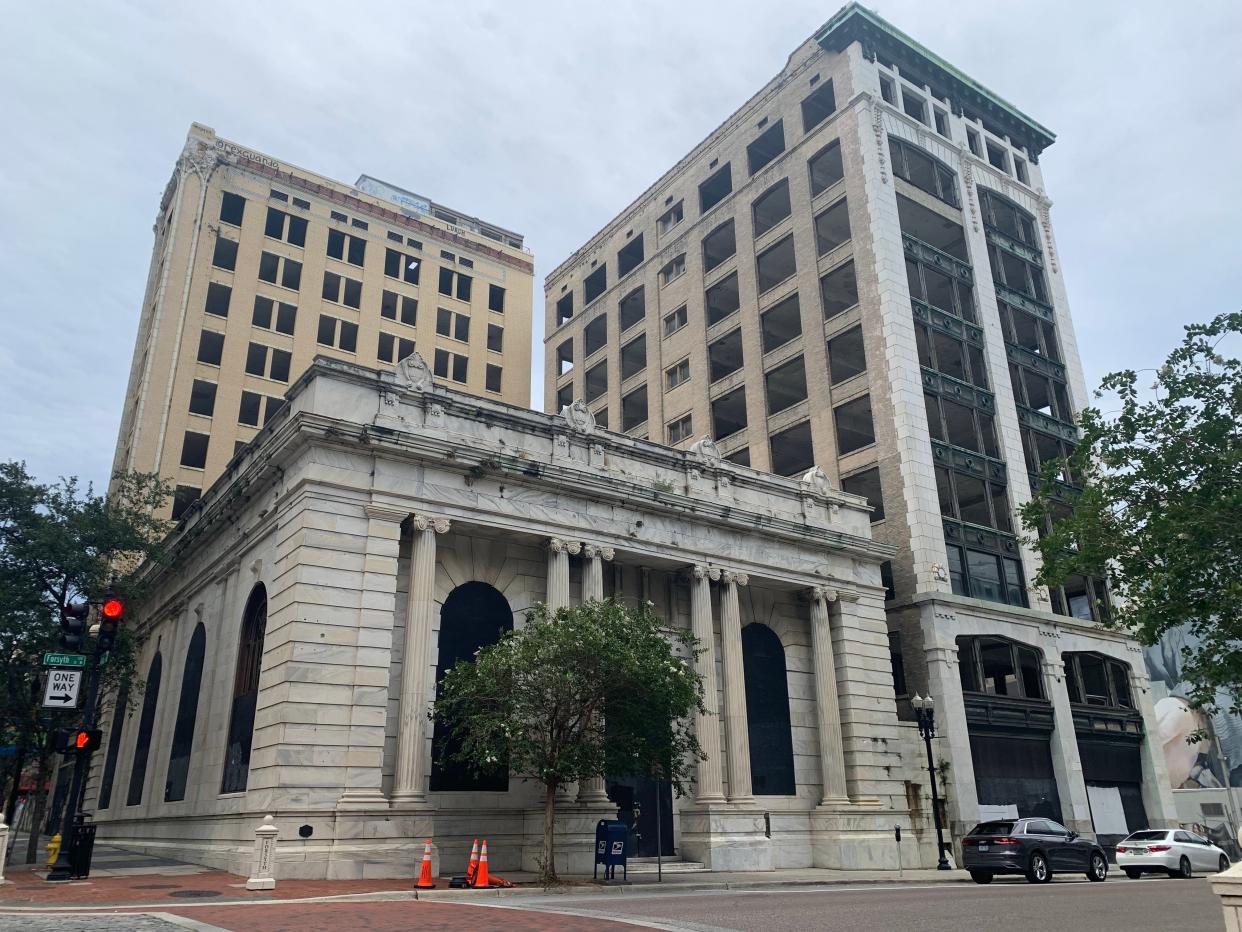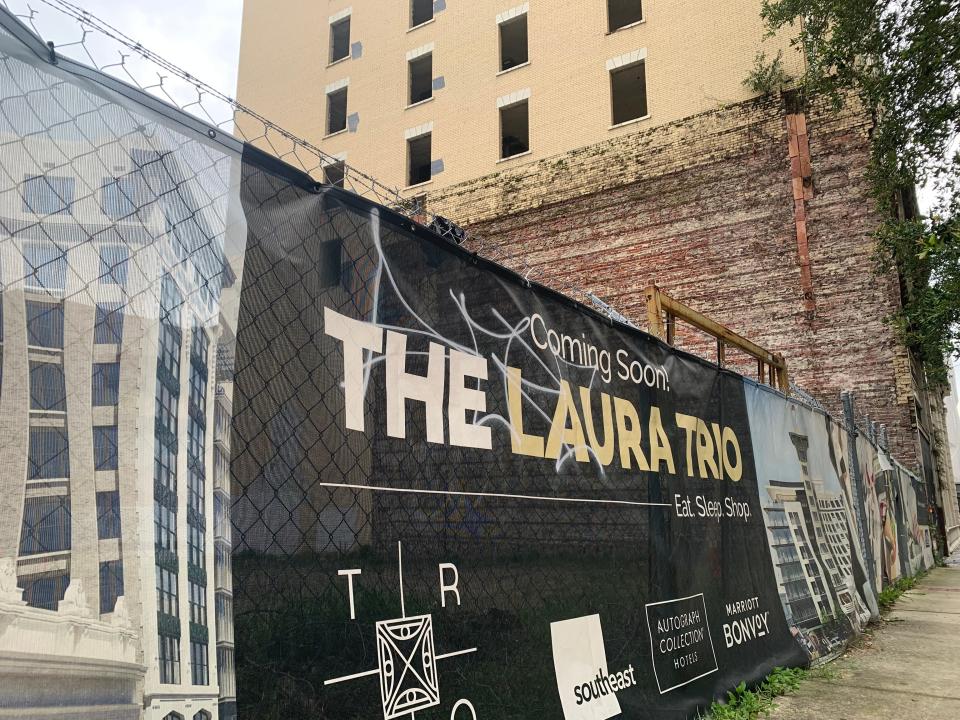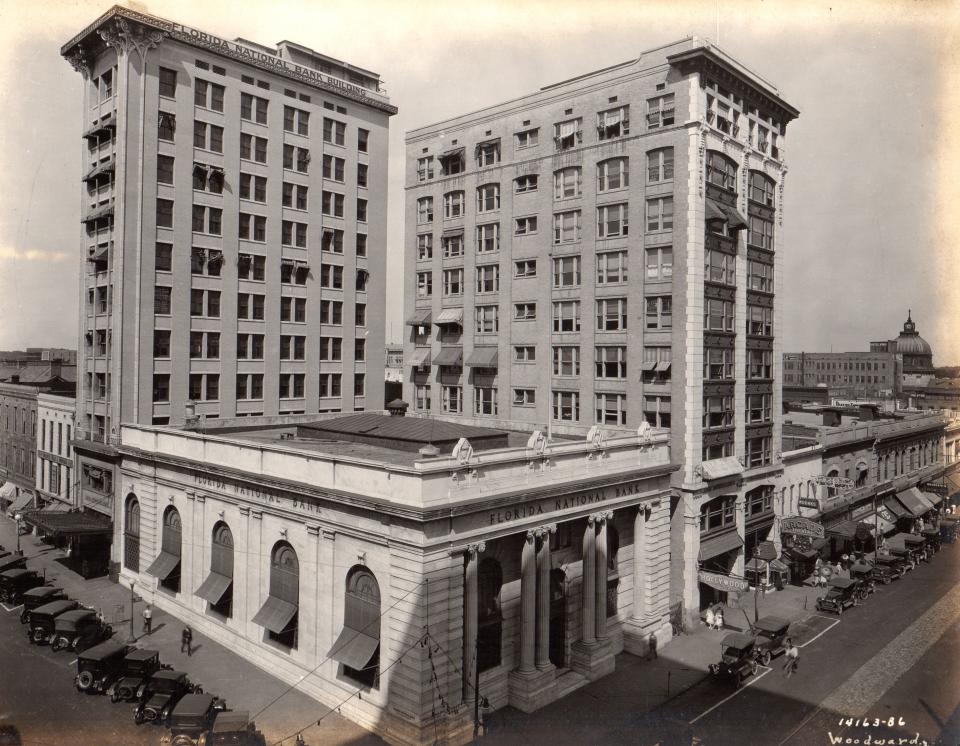Saving Jacksonville's 'Picasso': Plans to restore Laura Street Trio must move forward

“Our Picasso”
That’s how architectural historian Wayne Wood refers to the Marble Bank, Bisbee and Florida Life buildings in Downtown Jacksonville. Located where firemen halted the Great Fire of 1901, Jacksonville’s first skyscrapers — known as the Laura Street Trio — offer a unique perspective in urban American architecture.
Not only are they architecturally distinctive, but the buildings also tell the story of tenacious people, folks who seized the opportunity to build a new town of brick, stone and concrete in place of the wooden town ravaged by the devastating blaze. During our time, however, these buildings have suffered decades of abandonment and neglect.
We struggle — to understand, appreciate and reclaim.
When asked about his plans to restore the Trio, Southeast Development Group principal Steve Atkins once said, “If it were easy, it would have been done by someone before me.” Atkins, the developer of the successful restoration of Barnett Bank Tower, bought the Barnett building and the Trio a decade ago.
He’s right of course. Four mayors served while eight owners tried to redevelop what is arguably the most important half block of real estate in Downtown Jacksonville.

From the early 1900s until the 1990s, Trio ownership remained relatively stable, which changed when a foreign investor bought the buildings in 1999. The city of Jacksonville purchased the buildings in 2002 when that owner announced plans to demolish the Trio.
Why did the city come to the rescue?
It’s conjecture, but perhaps someone believed that willful demolition of Jacksonville’s architectural (and economic) heart and soul — the place and the buildings that mark Jacksonville’s renaissance — is simply wrong.
Sadly, the city abandoned attempts to reach an incentive agreement with a developer and transferred the Trio to the Fire and Police Pension Fund in 2004. In turn, the Pension Fund sold the buildings to an Orlando developer in 2007. After that developer went bankrupt a year later, the Trio fell into the hands of his Chicago-based lender.
The 2008 economic collapse devastated the local economy, and it took years to recover. Next, the world experienced an unprecedented pandemic, supply chains seized up, goods were hard to come by, labor was tight and eventually borrowed money was expensive again. All these factors made large, repurposing construction projects even more expensive.
It’s possible that Southeast’s plans, which include restoring the Trio and constructing two new buildings, is a last chance. As presently conceived, the new complex will include a Marriott Autograph Hotel and 169 multifamily apartments. Of these, 51 units will be affordable to folks who live on a policeman’s, teacher’s or nurse’s wages. There will also be street-level stores, a restaurant and bars.

Unlike the Barnett Tower restoration, which included no local taxpayer investment, Trio restoration will need public help. Indeed, downtown’s rebuilding depends upon a combination of grants, loans and tax relief brought to the table by local and federal taxpayers alike.
In June, the Downtown Investment Authority reviewed a set of public incentives that will provide extra public incentives for Trio restoration. The project was forwarded to the City Council without making a recommendation. Importantly, the DIA did not kill the idea of public investment in the Laura Street Trio, but in an unusual move left the decision to the City Council.
That body will soon wrestle with what size public investment to make in restoring downtown’s heart and soul.
For context, consider that we will soon debate the value — communal, economic and psychic — of investing at least $1 billion to rebuild a publicly owned football stadium that is not yet 30 years old. No doubt we will convince ourselves that we must do so because if we do not, the NFL may abandon Jacksonville.
Such a risk is simply too great to our community psyche, regardless of whether our investment produces a reasonable rate of financial return.
Letters: Who was ‘Duuuval,’ anyway? A Jax history lesson and other topics of interest
As the City Council debates the public’s financial role in restoring the Laura Street Trio, we will hear two narratives: One will tell us that we cannot afford to make a public dollar investment of the size necessary to breathe life into these critically important buildings; the other will tell us that we cannot afford not to do so.
Since the City and Pension Fund owned “our Picasso” for five years, and managed to not restore the Trio, the city clearly knows the nature of this challenge. Restoration simply will not happen without the public’s assistance.
It isn’t easy, nor cheap; but neither is building a new stadium. It also goes without saying that we want the Laura Street Trio and its two new adjacent companions to last longer than a mere 30 years. After all, they’ve stood proudly, at times occupied and at times dilapidated, for more than 100 years.
Still standing: See which iconic Jacksonville structures made the 2023 list of endangered properties
Compared to building a new stadium, the public amount needed to ensure the economic success of the Trio will look like pennies on the dollar. Not to mention that the stadium will be occupied periodically and episodically, compared to the occupancy rates of an apartment building and hotel.
Mayor Deegan and the City Council have the unique opportunity to break our historic downtown cycle of woe. They can champion restoration of the Laura Street Trio and provide the public financing necessary to bridge the gap between what traditional lenders will provide the developer and the capital investment required to succeed. They can do what none of their predecessors have accomplished.
Just as firemen ended the 1901 Great Fire at Forsyth, Adams and Laura streets, just as the city stopped willful demolition in 2002, local government can do us a favor and end this sad tale of woe.

Sherry Magill is the former president of the Jessie Ball duPont Fund, where she served for more than 25 years. She lives in Jacksonville.
This guest column is the opinion of the author and does not necessarily represent the views of the Times-Union. We welcome a diversity of opinions.
This article originally appeared on Florida Times-Union: Jacksonville leaders can change downtown course with Laura Street Trio

